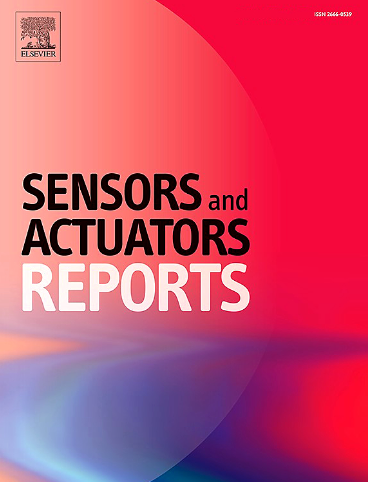crispr - cas13a驱动的电化学生物传感器用于基于rna的疾病诊断和监测
IF 7.6
Q1 BIOTECHNOLOGY & APPLIED MICROBIOLOGY
引用次数: 0
摘要
核酸在分子诊断中具有特异性、选择性和敏感性,可提供高效、高精度的结果。与DNA不同,RNA表达反映了实时细胞活动,允许监测疾病进展、治疗反应或环境影响。这使得RNA成为一种优越的生物标志物,因为它能够实现早期疾病检测,提供更高的特异性,允许非侵入性采样,并对低丰度靶点提供高灵敏度。基于rna的生物传感器创新在检测遗传疾病(如癌症)和预防病毒感染方面具有巨大的潜力。电化学生物传感器已经成为一种快速有效的替代金标准诊断方法,提供简单,快速反应和适合临床使用,包括护理点应用。最近的进展是将CRISPR-Cas13a系统与电化学生物传感器相结合,以提高RNA检测的灵敏度和特异性。CRISPR-Cas系统是细菌的一种适应性免疫机制,已广泛应用于诊断。Cas13a在RNA检测方面优于其他Cas蛋白,因为它具有高特异性,固有的信号扩增能力,无需逆转录或扩增步骤即可检测低丰度RNA。本文综述了CRISPR/ cas13a及其与电化学技术结合的最新进展,包括电化学发光(ECL)和光电化学(PEC)方法。介绍了CRISPR/Cas13a、电化学、ECL和PEC技术用于RNA检测的原理和优点。在基于电化学的生物传感器中,Cas13a识别并结合目标ssRNA,触发其反式切割活性,不加选择地切割附近的RNA报告蛋白。这一过程改变了电化学信号,实现了选择性和敏感的RNA检测。最后,讨论了几个基于CRISPR/ cas13的电化学生物传感器的例子,强调了它们作为RNA检测分子诊断工具的潜力,并强调了它们在灵敏度、特异性和快速检测能力方面的优势。©2012 Elsevier Ltd.出版由环球科技论坛私人有限公司负责甄选及/或同行评审本文章由计算机程序翻译,如有差异,请以英文原文为准。

CRISPR-Cas13a-powered electrochemical biosensors for RNA-based disease diagnostic and monitoring
Nucleic acids serve as specific, selective, and sensitive components in molecular diagnostics, offering efficient and high-precision results. Unlike DNA, RNA expression reflects real-time cellular activity, allowing for the monitoring of disease progression, treatment response, or environmental influences. This makes RNA a superior biomarker due to its ability to enable early disease detection, provide higher specificity, allow non-invasive sampling, and offer high sensitivity for low-abundance targets. RNA-based biosensor innovations hold significant potential for detecting genetic diseases, such as cancer, and preventing viral infections. Electrochemical biosensors have become a fast and efficient alternative to gold-standard diagnostic methods, offering simplicity, rapid response, and suitability for clinical use, including point-of-care applications. Recent advancements have integrated the CRISPR-Cas13a system with electrochemical biosensors to enhance RNA detection sensitivity and specificity. The CRISPR-Cas system, an adaptive immune mechanism in bacteria, has been widely utilized for diagnostics. Cas13a is superior to other Cas proteins for RNA detection due to its high specificity, inherent signal amplification, and ability to detect low-abundance RNA without requiring reverse transcription or amplification steps. This review summarized recent progression of CRISPR/Cas 13a and its combination with electrochemical technique, including electrochemiluminescence (ECL) and photoelectrochemical (PEC) methods. The principles and advantages of CRISPR/Cas13a, electrochemical, ECL, and PEC technique for RNA detection are described. In electrochemical-based biosensors, Cas13a recognizes and binds to the target ssRNA, triggering its trans-cleavage activity, which indiscriminately cuts nearby RNA reporters. This process alters the electrochemical signal, enabling selective and sensitive RNA detection. Finally, several examples of CRISPR/Cas13a-based electrochemical biosensors are discussed, highlighting their potential as molecular diagnostic tools for RNA detection and emphasizing their advantages in sensitivity, specificity, and rapid detection capabilities.
© 2012 Published by Elsevier Ltd. Selection and/or peer-review under responsibility of Global Science and Technology Forum Pte Ltd
求助全文
通过发布文献求助,成功后即可免费获取论文全文。
去求助
来源期刊

Sensors and Actuators Reports
Multiple-
CiteScore
9.60
自引率
0.00%
发文量
60
审稿时长
49 days
期刊介绍:
Sensors and Actuators Reports is a peer-reviewed open access journal launched out from the Sensors and Actuators journal family. Sensors and Actuators Reports is dedicated to publishing new and original works in the field of all type of sensors and actuators, including bio-, chemical-, physical-, and nano- sensors and actuators, which demonstrates significant progress beyond the current state of the art. The journal regularly publishes original research papers, reviews, and short communications.
For research papers and short communications, the journal aims to publish the new and original work supported by experimental results and as such purely theoretical works are not accepted.
 求助内容:
求助内容: 应助结果提醒方式:
应助结果提醒方式:


